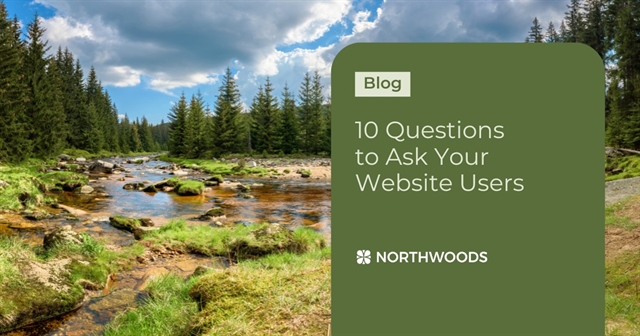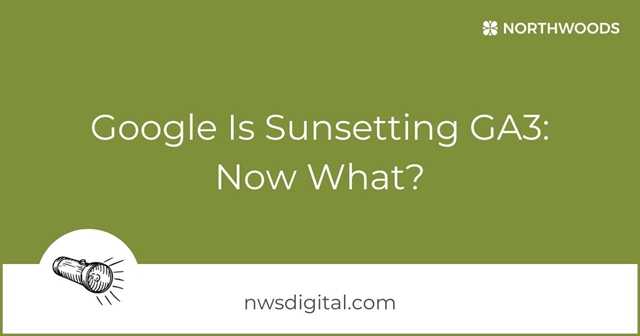By Dana Grennier
June 20, 2022
4 Minute Read
“If you don’t know where you are going, you’ll end up someplace else.” – Yogi Berra
Planning a trip takes work. Before GPS, you’d unfold your road map and plot the best path to your destination. Now, the route pops up instantly, in the palm of your hand. It seems so easy. But what about the scenic byways? Roadside attractions? Motels to book, decent food to discover? And do I need new tires before this trip? The truth is, even with modern gadgets, a successful outcome requires planning, time, and patience.
Content governance is just a fancy term for your content roadmap and to-do list. It means establishing a framework for future content that meets the unfolding needs of your business. Creating guidelines and fundamental rules can set you on a path for long-term success on the digital journey ahead.
What Is Content Governance?
This definition, from Nicole Hunter, associate project manager at Mightybytes, sums it up nicely:
“Content governance is a set of practices to create, publish, manage, distribute, and scale content in a real business environment. Content governance defines how content is reviewed, who is empowered to make editorial planning decisions, [and] what to do after content is published.”
Ultimately, it’s about putting processes in place to create engaging and relevant content that will meet your strategic goals. Those processes, executed correctly, will allow you to work smarter and effectively leverage the available talent and project time.
Creating a Content Governance Plan
Invest upfront time in planning, whether you’re launching a new site or just recognizing the need for content governance. That investment will pay off handsomely.
Work Backwards to Create a Template
Start by looking at your existing content. What are your regular, recurring needs? Which pieces leave you scrambling? Define those needs and gaps in a template you can use to streamline the content creation process.
Your template might include:
- Audience/channel
- Page title
- URL
- Meta keywords
- Meta description
- Header tags
- Teaser text
- Web copy
- Images
- Image alt-tags
- CTAs
- Read time
- Social media tie-ins
Define and Document Roles
Once you’ve created a template to codify the “what,” wrap your head around the “who” – those who create and process the content. Consider your editorial process; is it a one-stop shop, or does content go through layers of drafting, editing, approval, and publishing? Share style guidelines with everyone involved. Outline roles and rules, not only to make production more efficient, but also to reduce guesswork and frustration.
Here are responsibilities to consider:
- Content governance planning
- Content strategy
- First draft (this often comes from your subject matter expert)
- Editing
- Review for accessibility and SEO
- Approvals
- Publishing
- Analytics and tracking
Assign roles and manage permissions according to the strengths of your team and best use of their time. Involve your team; they know their jobs as well or better than you do, and they might be able to spot wrong turns in your road map. A fresh set of eyes can be a great asset. Be realistic with your expectations and timelines. Don’t overburden anyone; that leads to error and, sometimes, staff turnover. Crunch deadlines happen, but they shouldn't become normal.
Important Things to Keep in Mind
If You’re Building a New Website, Allow Time to Develop Your Governance Plan
When you’re ready to launch, and as you continue to populate your site over time, you’ll be thankful for that governance plan. It will be a huge help from a project management standpoint, plus that final step of copying and pasting content from a template into your CMS is something that could be handed over to an intern.
Keep It Simple
Spend reasonable time – not eons – on your content governance plan. Set aside time to create a nest egg of content prior to launch.
Flexibility Is Key
When creating your content governance plan, remember to stay flexible. It’s pretty much guaranteed that you won’t get it right the first time, so look for ways to improve and adjust as you go. In the end, you’ll have a more useful plan that better serves your business and your website users.
Incorporate Content Governance into Job Descriptions
This will create accountability and set clear expectations. Be sure to identify one person to take ownership of your content governance plan so they can champion the process and train new team members. (This is especially important for larger organizations.)
Ready, Set, Plan!
Your website content governance plan will be an empty exercise if you don’t follow through with implementation. Hold yourself and your team accountable. Stick with it. Content governance can leave plenty of room for creativity even as it guides you precisely to your strategic destination. Keep that road map hand and enjoy the digital journey.
If you need help creating a new digital strategy, website design or development, or digital marketing and advertising support, we're here to help! Don't hesitate to reach out to us for assistance.
Related Blog Posts

User input yields valuable data that can help guide your website strategy and marketing efforts. Here's what you should ask to effectively assess whether your current efforts are working.

When it comes to brand, many organizations jump right into execution — focusing only on visual elements like logos, fonts, colors and imagery. But execution without a strategy to guide it leaves your business growth to chance. Always start with brand strategy first. Here's why.

As of July 1, 2023, Universal Analytics (UA), also called GA3, will no longer accept any incoming traffic. What does that mean, though, and what should you do? Here’s a high-level outline of the steps you need to take to ensure continuity in your analytics.